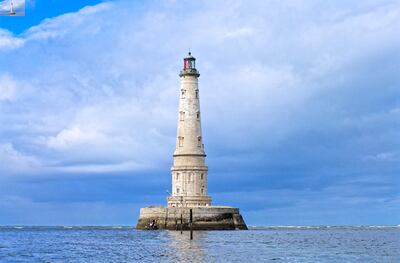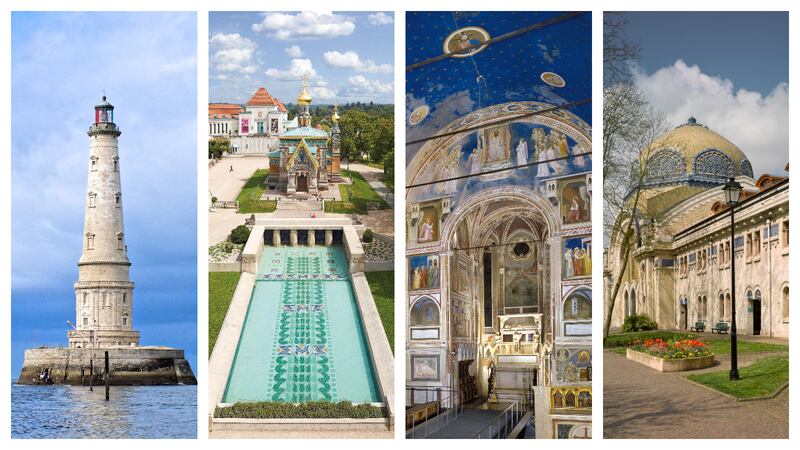Four cultural sites in Europe were inscribed on to the Unesco World Heritage List during the World Heritage Committee's annual session, including one transnational property that spans seven countries.
The 44th session, which is being held online and chaired from Fuzhou, China, has the body assessing the condition and management of more than 1,100 existing sites, as well as accepting nominations from countries for new World Heritage Sites.
This year, 39 nominations proposed in 2020 and 2021 are being examined, split between cultural, natural and mixed sites.
On Saturday, a total of five sites were inscribed, including Saudi Arabia's Hima Cultural Area. These are the four European additions:
The Great Spa Towns of Europe
Country: Austria, Belgium, Czech Republic, France, Germany, Italy, UK
Eleven towns in seven European countries make up this transnational site. This includes Baden bei Wien in Austria, Karlovy Vary in Czechia, Vichy in France, Baden-Baden and Bad Ems in Germany, and the city of Bath in the UK.
All of these towns have been developed around natural mineral water springs, and are a clear demonstration of international European spa culture, which sprung up in the early 18th century to the 1930s.
The serial site provides an illustration of an “urban typology and cultural movement”, with each town’s component spa buildings comprising hallmarks such as pump rooms, drinking halls, treatment facilities and colonnades that directly harness natural spring water.
"Together, these sites embody the significant interchange of human values and developments in medicine, science and balneology," reads a Unesco statement.
Cordouan Lighthouse
Country: France

The Cordouan beacon, also known as the "king of lighthouses", is the last to be located in France, and the second of its kind after Spain's La Coruna to win recognition from Unesco.
The lighthouse was built at the turn of the 16th and 17th centuries, designed by engineer Louis de Foix and remodelled by engineer Joseph Teulere in the 18th century.
The world heritage body describes it as a "masterpiece of maritime signalling". The tower, which sits in a "highly exposed and hostile environment" in the Atlantic Ocean at the mouth of the Gironde estuary in south-western France, was created from white limestone dressed blocks and decorated with columns, ornate brackets and gargoyles.
"It embodies the great stages of the architectural and technological history of lighthouses and was built with the ambition of continuing the tradition of famous beacons of antiquity, illustrating the art of building lighthouses in a period of renewed navigation, when beacons played an important role as territorial markers and as instruments of safety," says Unesco.
Mathildenhohe Darmstadt
Country: Germany
Mathildenhohe is the highest elevation above Darmstadt, a city in west-central Germany, and that is where, in 1897, Ernst Ludwig, Grand Duke of Hesse, established the Darmstadt Artists' Colony as a centre for emerging movements in architecture, arts and crafts.
The buildings in the colony, which was expanded during exhibitions in 1901, 1904, 1908 and 1914, were created by its members as "experimental early modernist living and working environments", according to Unesco. This means that today it offers testimony to early modern architecture, urban planning and landscape design influenced by the Arts and Crafts movement and Vienna Secession.
This is a serial property of two component parts, including 23 elements. It includes the Wedding Tower, an exhibition hall, the Russian Chapel of St Maria Magdalena, the Ernst Ludwig Fountain and 13 houses and artists' studios.
Padua's 14th-century fresco cycles
Country: Italy
Eight religious and secular building complexes situated within the historic walled city of Padua make up this newly inscribed site. Each house has a selection of fresco cycles painted between 1302 and 1397 by different artists for various reasons. Despite this, the frescoes are unified in style and content.
"As a group, these fresco cycles illustrate how, over the course of a century, fresco art developed along a new creative impetus and understanding of spatial representation," according to Unesco.
It includes Giotto's Scrovegni Chapel cycle, considered an important masterpiece of Western art and a "revolutionary development" in the history of mural painting. Other works include those by Guariento di Arpo, Giusto de' Menabuoi, Altichiero da Zevio, Jacopo d'Avanzi and Jacopo da Verona.






